Diana has been planting pots for me for 10 years. She starts with a square of landscape fabric over the drain hole, and adds drainage material to 2/3 of the pot. Another layer of landscape fabric prevents the soil from sifting down into the drainage layer. We use a topsoil/compost mix for pots. Soil-less mixes are great for professional growers, as it is sterile. Professional growers know how to water and fertilize properly. I like real soil. We mix in osmocote, a time release fertilizer; the rate of release speeds up as the soil temperature goes up. Apply according to directions. We go for that lush look; we pack the plants in, so they look great from the start. Later, we groom the pots. We remove excess growth underneath to keep the air circulation good, and the possibility of fungus low. We cut back the dead flowers and leaves. We may even shape the overall composition by trimming and cutting back. Does she not make it look easy??
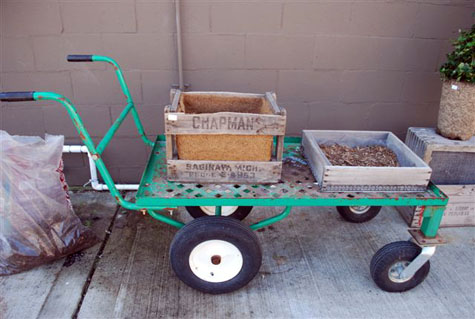
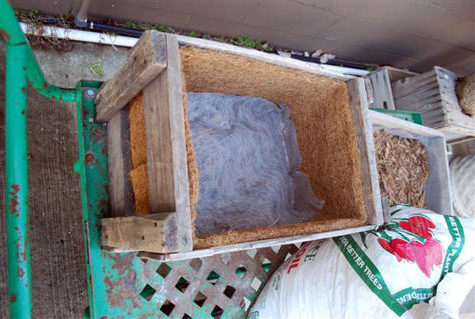
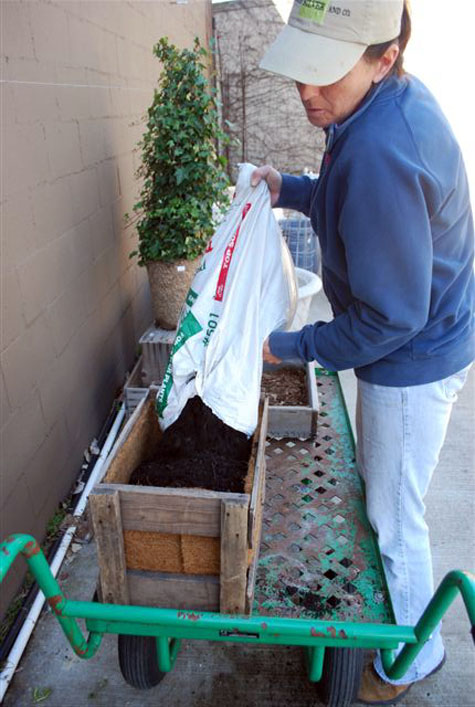
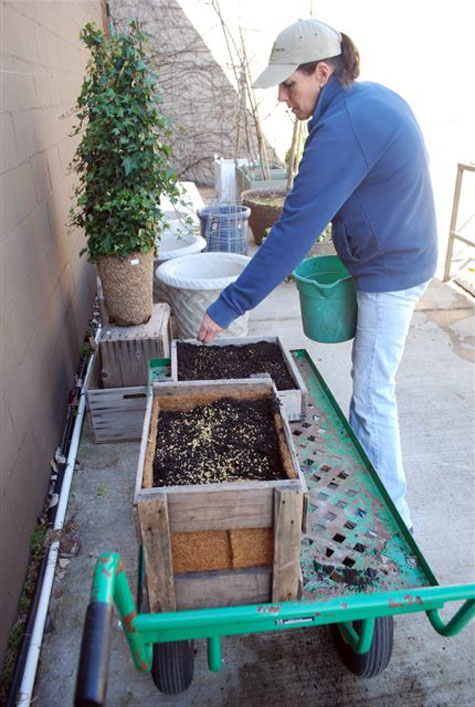
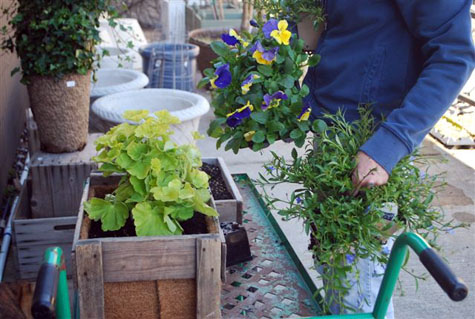

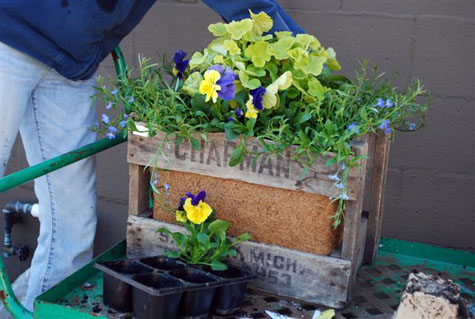
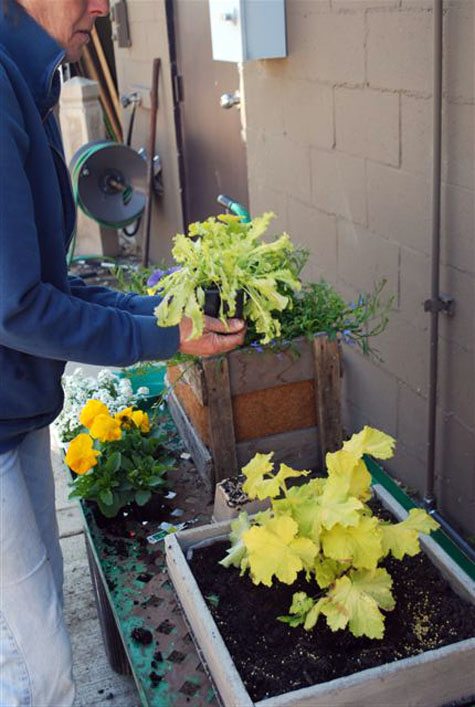
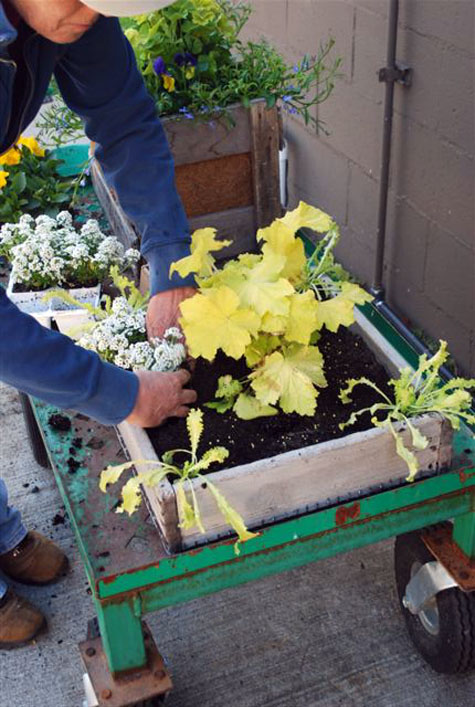

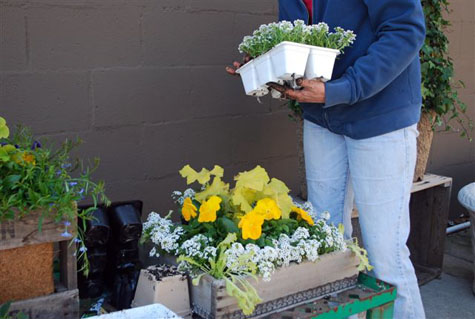 Spring plantings do look great in old crates, wood boxes, buckets and baskets. Landscape fabric can help hold the soil where you want it; coir sheets can be cut for boxes with big open spaces. Coir is a mat woven from the fibers of the hull of the coconut; it is sometimes called coco fiber. Have at planting some pots.
Spring plantings do look great in old crates, wood boxes, buckets and baskets. Landscape fabric can help hold the soil where you want it; coir sheets can be cut for boxes with big open spaces. Coir is a mat woven from the fibers of the hull of the coconut; it is sometimes called coco fiber. Have at planting some pots.
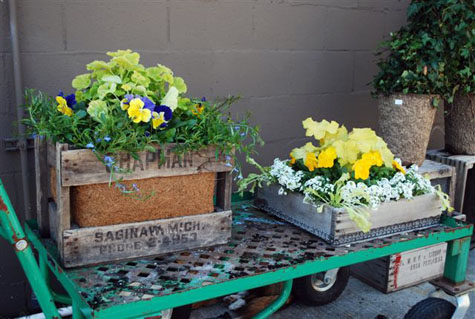
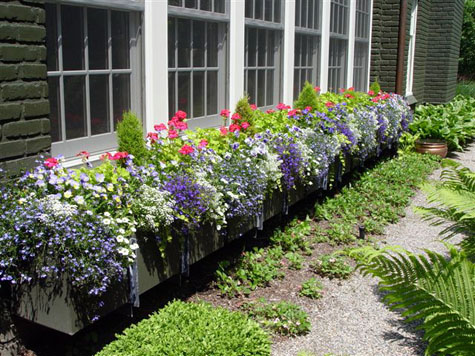
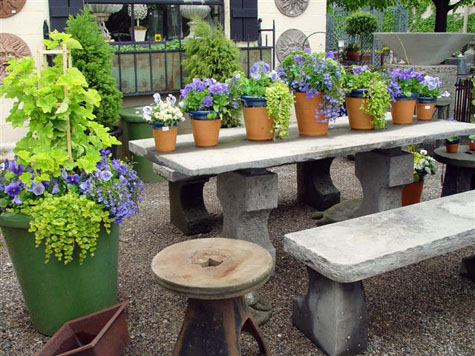 Spring flowers have that spring-fresh texture and color guaranteed to shake winter off of you, and your spirit. No summer flowers have the blue of clear sky blue pansies, and blue lobelia. Alyssum, the crisp white smell of spring, also comes in lavender, red violet, and purple. Ornamental kales, cabbages, Angelina sedum and coral bells have robust texture and leaf color. Lettuces, parsley, and gold oregano hint of the vegetable garden to come. Yellow and vanilla butterfly marguerites are quite cold tolerant, as is the chartreuse leaved Persian Queen geranium. Annual phlox performs beautifully, blooming on into the heat of the summer. Violas come in all kinds of colors, and bloom profusely. Fresh cut pussy willow twigs, yellow twig dogwood, and artificial grassy stems provide scale and height. Pots of hyacinth, daffodils, and tulips can also be popped into a pot for their duration.
Spring flowers have that spring-fresh texture and color guaranteed to shake winter off of you, and your spirit. No summer flowers have the blue of clear sky blue pansies, and blue lobelia. Alyssum, the crisp white smell of spring, also comes in lavender, red violet, and purple. Ornamental kales, cabbages, Angelina sedum and coral bells have robust texture and leaf color. Lettuces, parsley, and gold oregano hint of the vegetable garden to come. Yellow and vanilla butterfly marguerites are quite cold tolerant, as is the chartreuse leaved Persian Queen geranium. Annual phlox performs beautifully, blooming on into the heat of the summer. Violas come in all kinds of colors, and bloom profusely. Fresh cut pussy willow twigs, yellow twig dogwood, and artificial grassy stems provide scale and height. Pots of hyacinth, daffodils, and tulips can also be popped into a pot for their duration.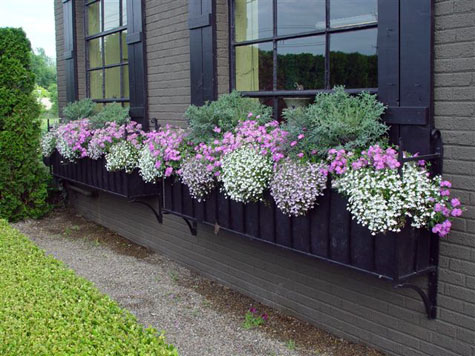 Spring is a season like no other. Give some time to enjoying it. Spring pots are a perfect for a collection of lettuces that will spruce up your salads. A collection of spring pots also helps considerably to stave off the impulse to plant summer pots too early. Most summer annuals despise cold soil and cool temperatures. For everything, the right season. Plant your spring.
Spring is a season like no other. Give some time to enjoying it. Spring pots are a perfect for a collection of lettuces that will spruce up your salads. A collection of spring pots also helps considerably to stave off the impulse to plant summer pots too early. Most summer annuals despise cold soil and cool temperatures. For everything, the right season. Plant your spring. 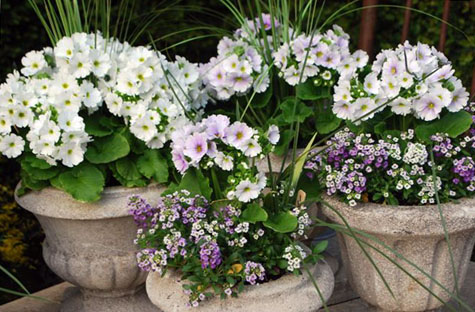
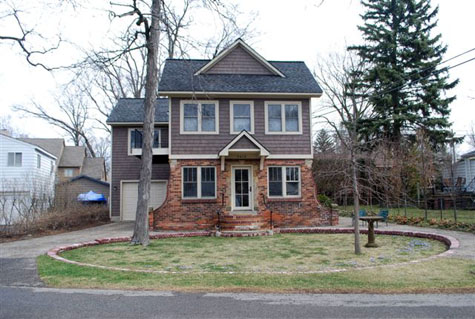
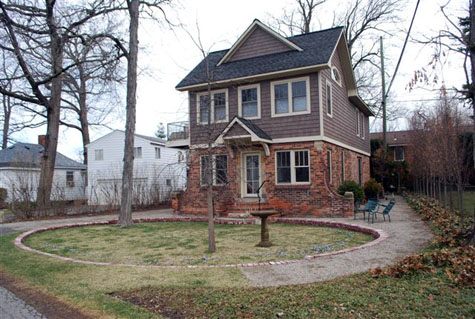 This very small urban property has a big idea about landscape. The gravel driveway on the south is mirrored to the north by a grilling terrace, which becomes a walkway to the street. The large sunken ellipse, edged in brick, is presided over by an old shagbark hickory, a young pin oak, and a vintage American birdbath. This landscape is as beautiful as it is utilitarian. It is ample proof that no space is too small for a big design idea. Even on the next to the last day of the Michigan winter, its bare bones look good.
This very small urban property has a big idea about landscape. The gravel driveway on the south is mirrored to the north by a grilling terrace, which becomes a walkway to the street. The large sunken ellipse, edged in brick, is presided over by an old shagbark hickory, a young pin oak, and a vintage American birdbath. This landscape is as beautiful as it is utilitarian. It is ample proof that no space is too small for a big design idea. Even on the next to the last day of the Michigan winter, its bare bones look good.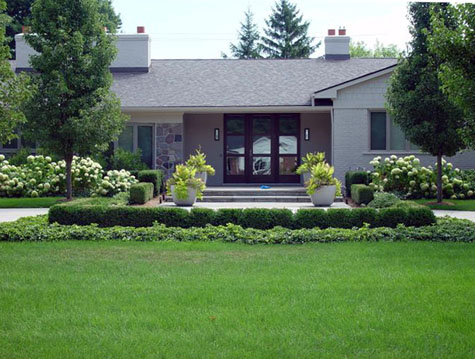
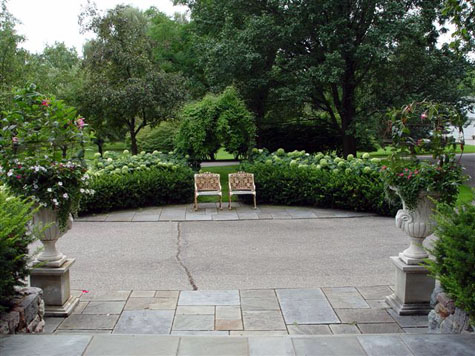 Years ago I was part of a crew planting a landscape for a local church. The designer was very old-school about proper placement of landscape materials. He once remarked to me that if the best looking day of a landscape was the day it went in, the designer deserved a ticket and a heavy fine for not having educated his client about the difference between theatre, and landscape.
Years ago I was part of a crew planting a landscape for a local church. The designer was very old-school about proper placement of landscape materials. He once remarked to me that if the best looking day of a landscape was the day it went in, the designer deserved a ticket and a heavy fine for not having educated his client about the difference between theatre, and landscape.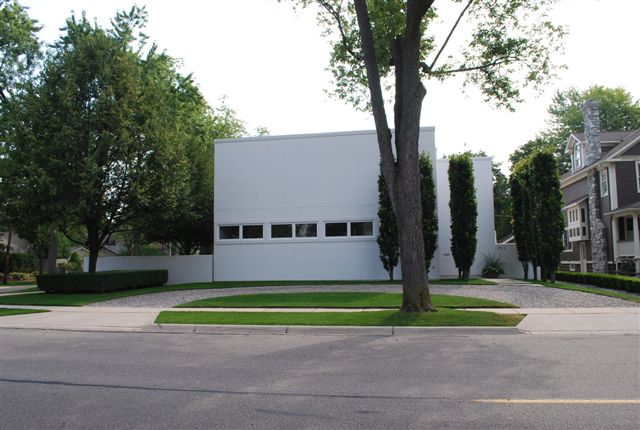
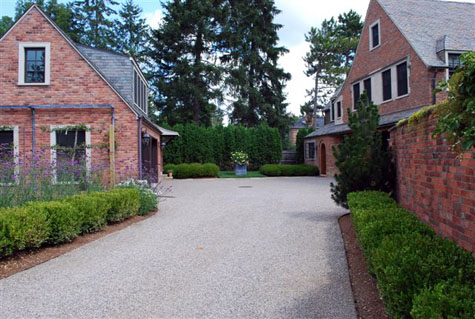 But here I was planting trees very close to the foundation of the church. Once the trees were planted, he went to each tree with shovel, and tilted them ever so slightly away from the building. When I protested that the trees were crooked, he said, “Imagine what this will look like in twenty years. It will seem that the trees were here first, and the church emerged from this grove, pushing the trees ever so slightly outward. The house of God, nature, history-do you get this?” I did.
But here I was planting trees very close to the foundation of the church. Once the trees were planted, he went to each tree with shovel, and tilted them ever so slightly away from the building. When I protested that the trees were crooked, he said, “Imagine what this will look like in twenty years. It will seem that the trees were here first, and the church emerged from this grove, pushing the trees ever so slightly outward. The house of God, nature, history-do you get this?” I did. I make it a point to try to imagine how I can make the landscape appear as though it came first, and the house, the walls, terraces, and driveway, came later.
I make it a point to try to imagine how I can make the landscape appear as though it came first, and the house, the walls, terraces, and driveway, came later.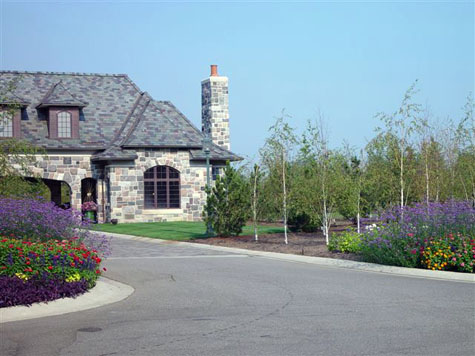 Designing the landscape such that you drive through it, makes the landscape appear as if it came first, and therefore the more important element. This sits the drive down on the ground, visually. It makes the transition from the street to your home an experience. Imagine this.
Designing the landscape such that you drive through it, makes the landscape appear as if it came first, and therefore the more important element. This sits the drive down on the ground, visually. It makes the transition from the street to your home an experience. Imagine this.